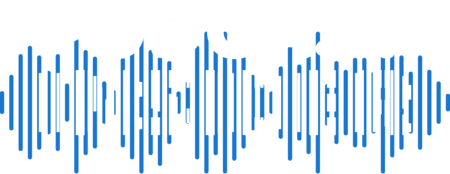How to Measure & Improve Your Podcast Performance
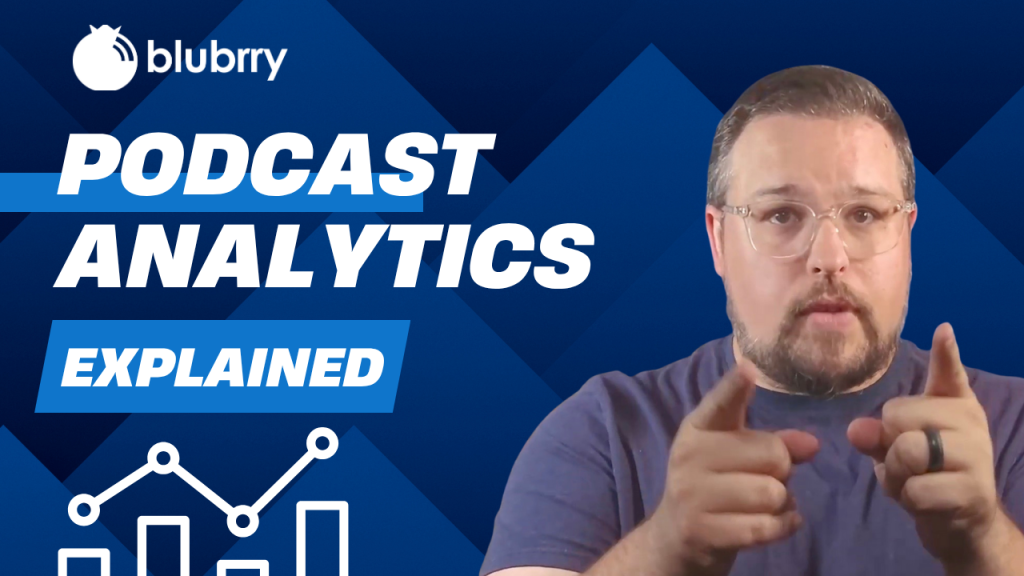 Ever upload a new podcast episode, cross your fingers, and hope the download numbers climb? You’re not alone — but you don’t have to leave growth to chance. According to Dave Clements, Blubrry’s longtime support analyst, “Podcasting feels personal, but growth is math. Without data, you’re guessing — ‘I think people liked that guest?’ Analytics replace guesswork with proof.”
Ever upload a new podcast episode, cross your fingers, and hope the download numbers climb? You’re not alone — but you don’t have to leave growth to chance. According to Dave Clements, Blubrry’s longtime support analyst, “Podcasting feels personal, but growth is math. Without data, you’re guessing — ‘I think people liked that guest?’ Analytics replace guesswork with proof.”
At Blubrry, Dave and the team have coached thousands of podcasters through the maze of stats and trends. In his latest video (embedded below), he breaks down how to use Blubrry’s dashboard to make informed, actionable decisions that grow your show with intention, not luck.
The Metrics That Matter
The first step is knowing which metrics to track. Dave says, “We’ll cover which stats actually matter, how to read them, and simple tweaks you can make right now to boost downloads and retention.”
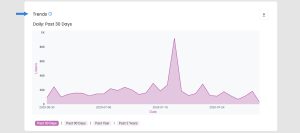 Start with the Recent Episode Stats panel. This provides a snapshot of how your latest batch of episodes is performing, including total downloads over the past 30 days, the number of episodes included, and your global ranking. “That context helps you set smart growth goals and not sweat the small spikes or dips,” Dave explains.
Start with the Recent Episode Stats panel. This provides a snapshot of how your latest batch of episodes is performing, including total downloads over the past 30 days, the number of episodes included, and your global ranking. “That context helps you set smart growth goals and not sweat the small spikes or dips,” Dave explains.
Trends Over Time: Zooming Out
 Beyond episode snapshots, look at long-term trends. The 30-day daily graph gives you heartbeat-level insight, showing spikes from promotions or guest appearances. The Monthly Trends chart zooms out even further, letting you spot seasonal patterns, format shifts, or long-term growth.
Beyond episode snapshots, look at long-term trends. The 30-day daily graph gives you heartbeat-level insight, showing spikes from promotions or guest appearances. The Monthly Trends chart zooms out even further, letting you spot seasonal patterns, format shifts, or long-term growth.
Episode Detective Work
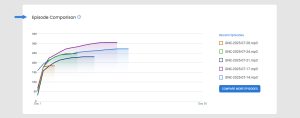 Want to know which episodes really connected with your audience? Use the Episode Comparison tool to line up shows side by side and compare performance. For a deeper look at listener behavior, check out Average Daily Plays.
Want to know which episodes really connected with your audience? Use the Episode Comparison tool to line up shows side by side and compare performance. For a deeper look at listener behavior, check out Average Daily Plays.
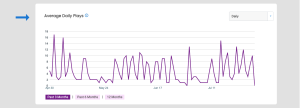 “That chart helps you see if an episode keeps pulling listeners long after launch—hello, evergreen content!” says Dave.
“That chart helps you see if an episode keeps pulling listeners long after launch—hello, evergreen content!” says Dave.
Retention: The Power Metric
Plays tell you how many clicked, but Retention shows how long they stuck around. “Look at the red section—those are your ‘impactful plays.’ The folks who listened to at least 75%. They heard your CTA. They heard your sponsor,” Dave notes. If you’re seeing early drop-offs, he suggests tightening your intro or getting to the good stuff faster.
Audience Insights: Listeners, Subscribers & Geography
 The Estimated Audience panel breaks downloads into unique listeners and loyal subscribers. “If subscriber counts lag behind total listeners, remind casual fans to follow in-app,” Dave recommends.
The Estimated Audience panel breaks downloads into unique listeners and loyal subscribers. “If subscriber counts lag behind total listeners, remind casual fans to follow in-app,” Dave recommends.
Geolocation heat maps can reveal surprising pockets of fans. “Maybe you’re huge in Toronto and Berlin — hello, bonus shout-outs, tailored ads, or even live events,” Dave says. You can drill down to detailed regions such as U.S. Nielsen DMAs, Canadian provinces, or U.K. counties.
Device and App Data: Meet Listeners Where They Are
Scroll to Apps & Devices to see where people are tuning in. “If 60% of your listeners use mobile apps, make sure your episode titles and descriptions look great on small screens,” Dave advises.
Test, Track, Repeat
Data should drive decisions. Use the Event Tracker to mark experiments like promo pushes or guest spots. “A week later, you’ll see whether that push produced a spike — or crickets. No spreadsheets, no mental math—just a visual before-and-after,” Dave says.
Close the Loop with Surveys
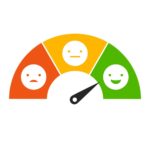 “Quantitative stats say what happened; surveys tell you why,” Dave reminds us. Use the free, built-in listener survey to gather demographics and preferences. “Maybe your tech podcast attracts a surprising 45-plus crowd — that might influence your ad partners or the level of detail in your episodes.”
“Quantitative stats say what happened; surveys tell you why,” Dave reminds us. Use the free, built-in listener survey to gather demographics and preferences. “Maybe your tech podcast attracts a surprising 45-plus crowd — that might influence your ad partners or the level of detail in your episodes.”
Package Your Proof for Sponsors
“When you’re ready to pitch sponsors, grab the daily-updated media kit,” Dave says. The Blubrry dashboard pulls your freshest download, retention, and demographic data into a polished one-sheet, making sponsorship outreach simple and current.
Your Next Steps
Ready to grow your podcast on purpose? Dave recommends this three-step action plan:
- Define one metric to move — downloads, retention, or geographic reach.
- Run a focused experiment — try a new episode title style, cross-promo, or shorter intro.
- Use the Event Tracker to measure results, then repeat.
“Data-driven tweaks compound fast,” Dave says. “Start small, stay curious, and let the numbers guide you. Make your next episode your best-performing one yet.”





